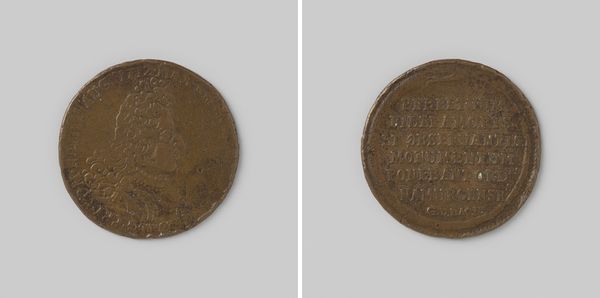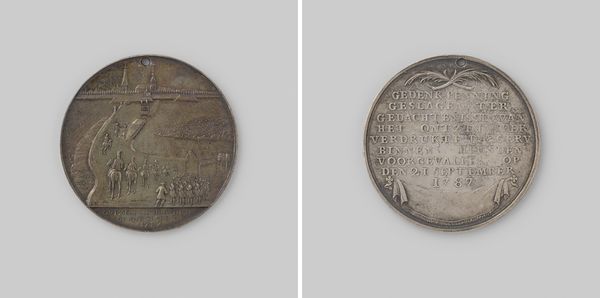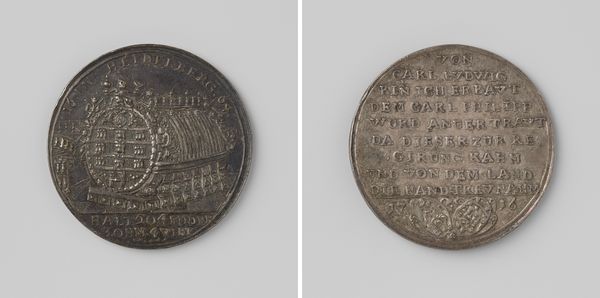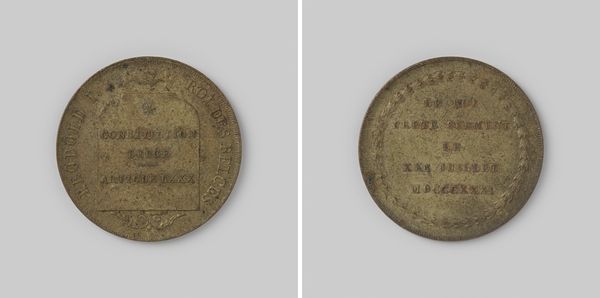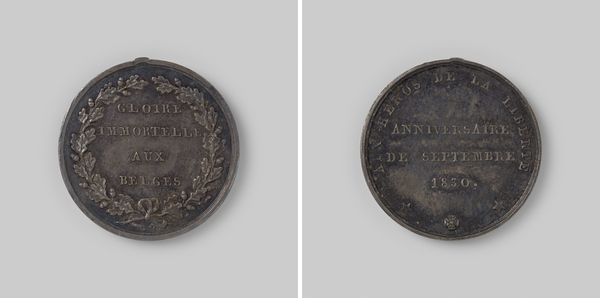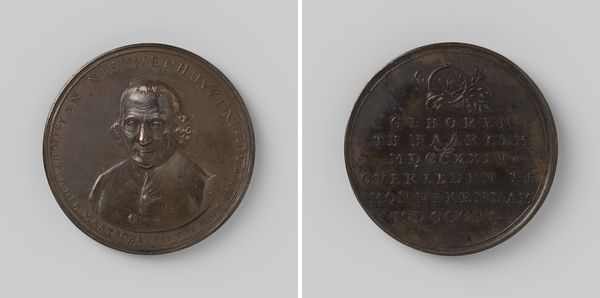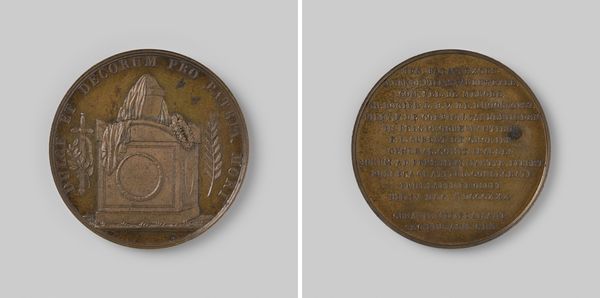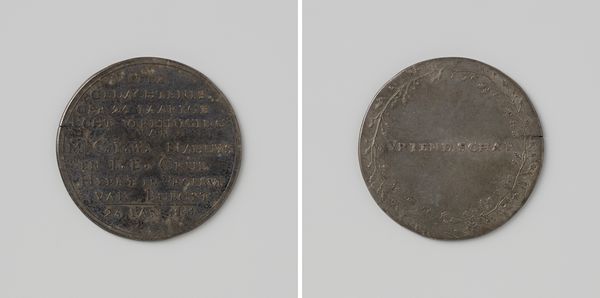
metal, bronze, engraving
#
metal
#
bronze
#
history-painting
#
engraving
Dimensions: diameter 2.5 cm, weight 80 gr
Copyright: Rijks Museum: Open Domain
Curator: So, we're looking at a bronze engraving titled "Generaal Hoven te Mons gevangen genomen"—roughly translated, "General Hoven Taken Prisoner at Mons." The piece is dated sometime between 1830 and 1839. It seems to be a commemorative medal. Editor: Immediately, I’m drawn to the circular format. It feels… contained. Like history itself, neatly packaged. And the color… this burnished bronze speaks of age, conflict, stories whispered through time. Curator: The medal commemorates the capture of General Hoven, likely during the Belgian Revolution. Understanding the revolution is key here. It was a turning point, challenging established power structures and leading to Belgium’s independence. Think of it as part of a broader wave of 19th-century nationalism and liberalism. Editor: It's like holding a tiny echo of a revolution in your hand. Can you imagine what it felt like to be present at that moment? The energy! I almost feel the need to clutch it and join the streets in fierce shouts! Curator: Absolutely! Medals like these served a powerful purpose. They were instruments of propaganda and commemoration, solidifying a particular narrative and reinforcing national identity. The inscription details the event. Look at the deliberate crafting of a national memory in bronze. Editor: I notice, too, the slightly uneven etching. It brings in this interesting hand-made quality. This almost intimate contrast is what grabs my interest: brutal event, intimate portrayal. There’s real weight in how something like this exists. Almost like poetry written by gunfire. Curator: It's a fascinating point – the tension between mass production and the individual maker. The very act of circulating such images, though, served a broader political purpose. It amplified a specific reading of events that favored the revolutionaries and newly independent Belgium. Editor: When you zoom in on it you start feeling this immediate contact between now and then, it really closes a gap. It invites introspection… What kind of bravery—or foolhardiness—would drive you to get caught during wartime? Curator: That’s a wonderfully individualistic way to engage with this. I tend to gravitate towards viewing such objects through a lens of historical accountability, particularly understanding how they operate within the socio-political sphere. Editor: Yes! In the end, even these perspectives form the basis for what it really means to interpret artwork from a different temporal point. To examine the dialogue this little thing still makes, from within time itself. It's pretty cool, you know?
Comments
No comments
Be the first to comment and join the conversation on the ultimate creative platform.
